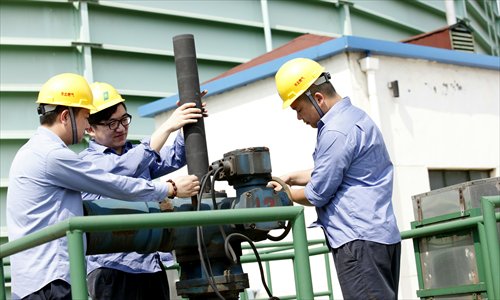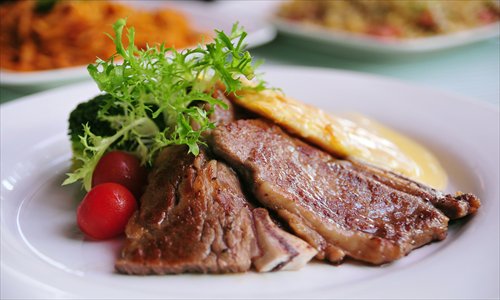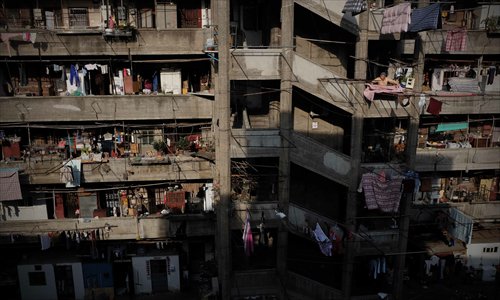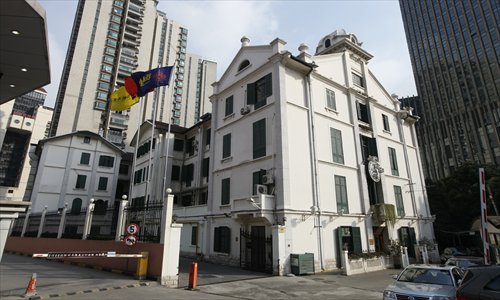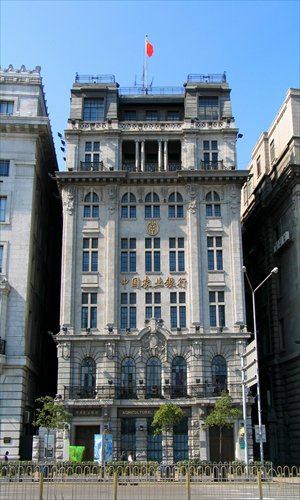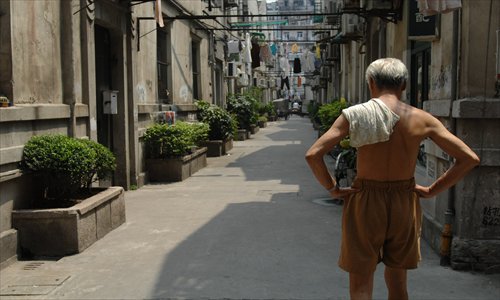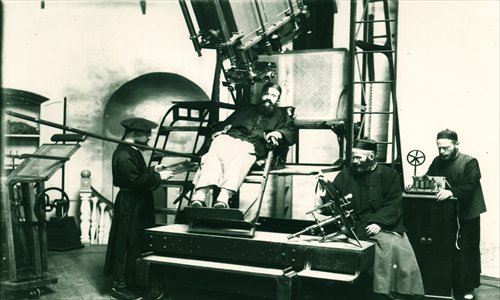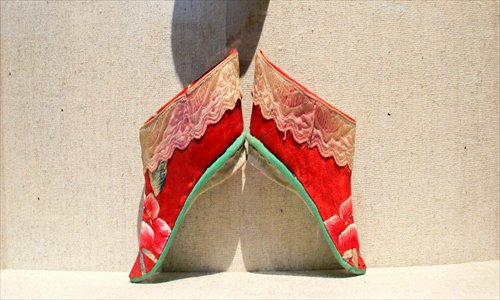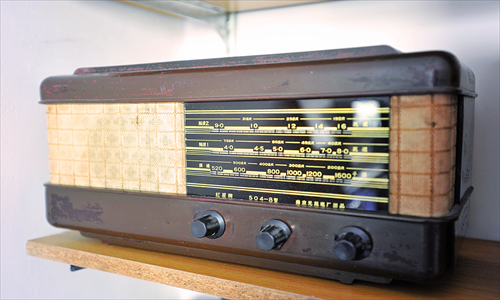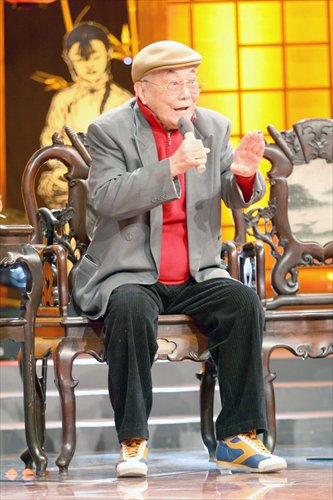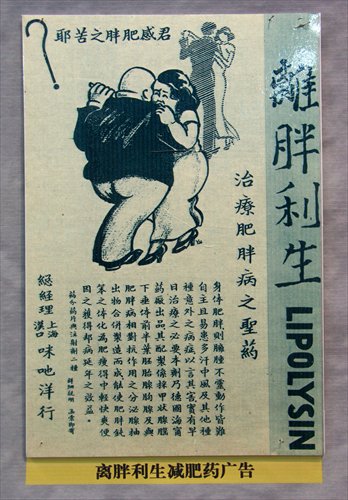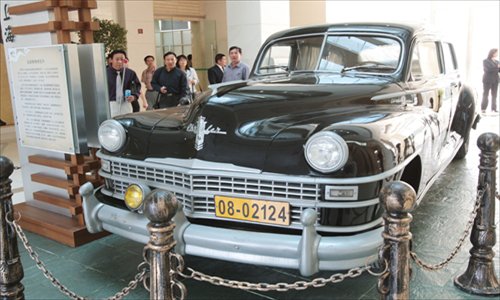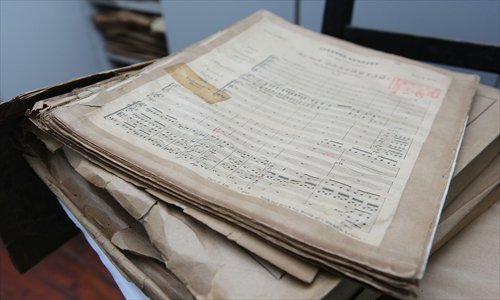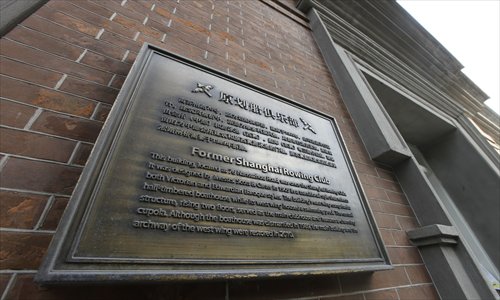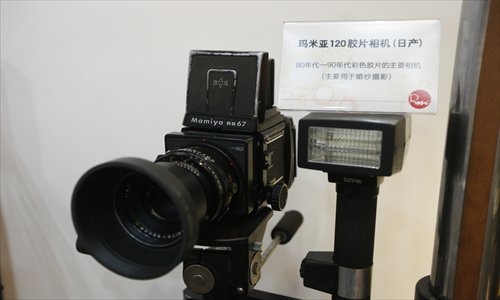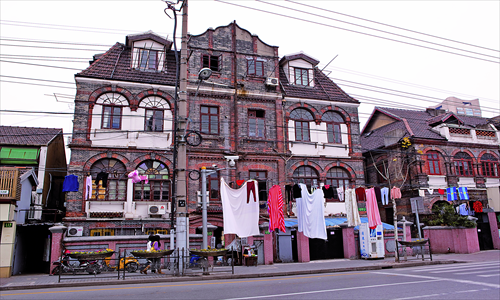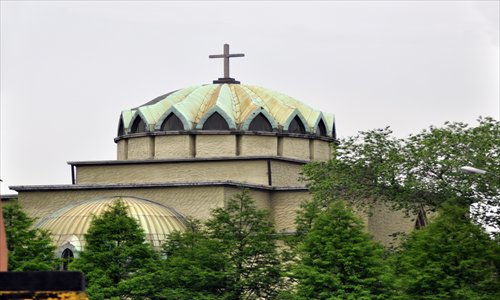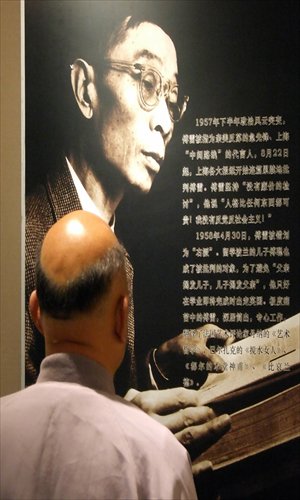Lighting the way
Nearly half of Shanghai’s gas holders will be removed by 2015. The coal gas (or town gas) that has been keeping the city’s kitchens cooking since the 1970s is being replaced by natural gas, a more efficient and cleaner energy source. The work is being carried out as part of the 12th Five-Year Plan (2011-15).
Foreign flavors
The Italian missionary Lazzaro Cattaneo arrived in Shanghai in 1608 and introduced local believers to communion wine and bread. This was probably the first taste of international cuisine offered in the city but after Shanghai was opened up as a port in 1843, cooks from Britain, the US, France, Italy and Russia began setting up their own restaurants, bars, and cafés featuring their own foods.
Arresting developments
The Shanghai Municipal Police (SMP) was the police force of the Shanghai Municipal Council which ran the mainly British International Settlement. Formed in 1854, it enforced the law in the International Settlement and some other parts of Shanghai until 1943.
In that period its numbers rose to a peak of 6,000 active officers during the 1930s. While the SMP’s composition was by no means representative of the settlement’s citizens, it was a very international force – among its ranks were Chinese, English, Irish, Japanese, Russians, Scots, Sikhs, and a sprinkling of Americans, Australians, Austrians, Germans, Swedes and others. But the majority of the upper ranks were British, and most of the lower level constables were Chinese.
A history of helping hands
While Shanghai now boasts a plethora of organizations lending a helping hand to those in need, the origins of the city’s charitable organizations can be traced back to the Ming Dynasty (1368-1644). According to historical records, the first charity house in the Shanghai region was opened in the year 1374 to take in homeless and disabled people.
Policies and profits
China’s insurance industry began in Guangzhou in 1805 as a way of protecting shipping companies and shipowners in often unstable conditions. When Shanghai was opened as a port in the mid-19th century, foreign insurance companies expanded north and the insurance business grew quickly with Shanghai becoming the insurance base for China.
Behind the gates
Two of the most distinctive features of Shanghai are the architectural and street designs – the blend of European and Chinese influences that sprang up after the 1840s when the city was opened up to Western culture and trade. The most notable of these features were the longtang, the alleyways, where the shikumen, the “stone gate” houses, stood shoulder to shoulder, accommodating the citizens.
Seeing stars
As China’s Ming Dynasty (1368-1644) came to its close, Europeans were undergoing a massive rebirth in science and culture. The Renaissance saw Polish mathematician and astronomer Nicolaus Copernicus outline the heliocentric view of the universe, putting the sun, rather than the Earth, at the center and the Italian scientist Galileo improved the telescope and used it to make some major advancements in astronomy.
A touch of class
The images of women in old Shanghai that spring to mind usually feature exquisite young women in beautiful qipao. But these pictures overshadow the reality of the early days when women suffered foot binding, backward thinking, oppression and lived in a society that gave them few rights.
After Shanghai opened its port in 1843, the arrival of Western ideas meant Shanghai women were the first in China to be exposed to Western perceptions of women’s rights, and the second half of the 19th century saw an awakening and blooming for women in the city.
During the late Qing Dynasty (1644-1911) and the early years of the Republic of China (1912-1949), a new group of women emerged in the city: female students who had been living in Shanghai and experiencing Western culture and influences.
Sounds from the city
A few years after the founding of the earliest record player companies like Pathé by the Pathé Brothers in France in 1896, the Gramophone and Typewriter Company by William Owen in the UK in 1900, and the Victor Talking Machine Company by Eldridge R. Johnson in the US in 1901, Shanghai became the target for this new entertainment. In 1903, the Gramophone and Typewriter Company started recording discs in China. The recordings were all Chinese opera – 329 Putonghua records were made in Shanghai and 147 Cantonese versions were recorded in Hong Kong.
A good long laugh
Now officially listed as one of the city’s intangible cultural heritages, Shanghai farce (huajixi) is a unique traditional comedy performance style that originated in Shanghai in the early 20th century and flourished in the Yangtze River Delta region thereafter.
Hard and soft sells
Chinese businessmen have probably always known about the power of advertising but methods changed after 1843 when Western styles of advertising arrived in Shanghai and other cities. Chinese businesses quickly adapted many of the new forms and moved far beyond their basic signs over shop doors.
Digging up the past
Gissing was just one of thousands of foreigners who were buried in Shanghai. Many who were buried actually hadn’t died here. Before the opening of the Suez Canal in 1869, a journey from Europe to Shanghai took up to six months. By the time ships arrived in Shanghai, some of the crew or passengers on board would have died. Others would be so ill they would not be able to return.
Downbeats and upbeats
Before Shanghai opened its port in 1843, the only music that could be heard in the city was played by traditional Chinese musical instruments including the local sizhu groups (“the silk and bamboo” instrumental ensembles).
The music changed that year when the British owned Moutrie shop opened in Nanjing Road selling Western musical instruments and sheet music. It was China’s earliest Western music shop and sold pianos, accordions, and harmoniums for churches.
Time to play
From the late 19th century to the first half of 20th century hundreds of clubs, societies and associations thrived in Shanghai. Many of these groups, Chinese and foreign, were associated with sports. Over a century, most of these sports clubs vanished or disbanded but some have endured the tide of time and have blossomed in modern times in new incarnations.
A changing focus
When 66-year-old Mr Wang brought his wife to a photographic studio hidden in a quiet lane on Julu Road last week, he didn’t expect to see the place crowded with senior citizens. Wang is a romantic husband and arrived at the studio with a set of seven black and white wedding photos which were taken on March 5, 1981. He wanted to have his now 63-year-old bride don her wedding gown again and recreate the moment for the camera
Life in the ghetto
Today’s Huoshan Park (Wayside Park), an exquisite little patch of green in the southeastern part of Hongkou district, is where one can catch Chinese men and women doing their morning exercises, strolling or taking their birds for a walk. In the 1930s and 1940s it would have presented a very different scene. In those days the park was the heart of the Shanghai Ghetto, “the Designated Area for Stateless Refugees” as it was formally known. It was then the only place where the 20,000 or more European Jews, who were crammed together in Hongkou district, could gather and relax and get some fresh air. Just around the corner on Changyang Road stands the former Ohel Moshe Synagogue, now the Shanghai Jewish Refugees Museum.
The wonders of the west
Shanghai’s Bund has been called the “World Expo of Architecture” for its varied architecture styles, but the city’s western suburbs along Hongqiao Road could also claim this title. The area is home to more than 200 buildings of diverse and elegant architectural styles from all over the world. A recent 35-minute documentary, The Legend of West End, screened on the local Documentary Channel in 2012, explored the history of Shanghai’s western suburbs. This is an area often described by some as the city’s leafy tranquil garden that once was home to some of Shanghai’s most powerful and wealthiest inhabitants.
Bringing new words home
Early last century the translations of great books were often the only windows where Chinese people could view the rest of the world. Classics like Anna Karenina, War and Peace, and the plays of William Shakespeare were, for most, the only way Chinese people could learn about foreign cultures and the lives of people in other countries. In those days only a handful of Chinese people spoke another language and fewer still could translate books. As one of the few Chinese cities which opened to the world after hundreds of years’ of the Qing Dynasty’s (1644-1911) closed-door policy – which also closed visions and minds – Shanghai cultivated a group of acclaimed translators.
